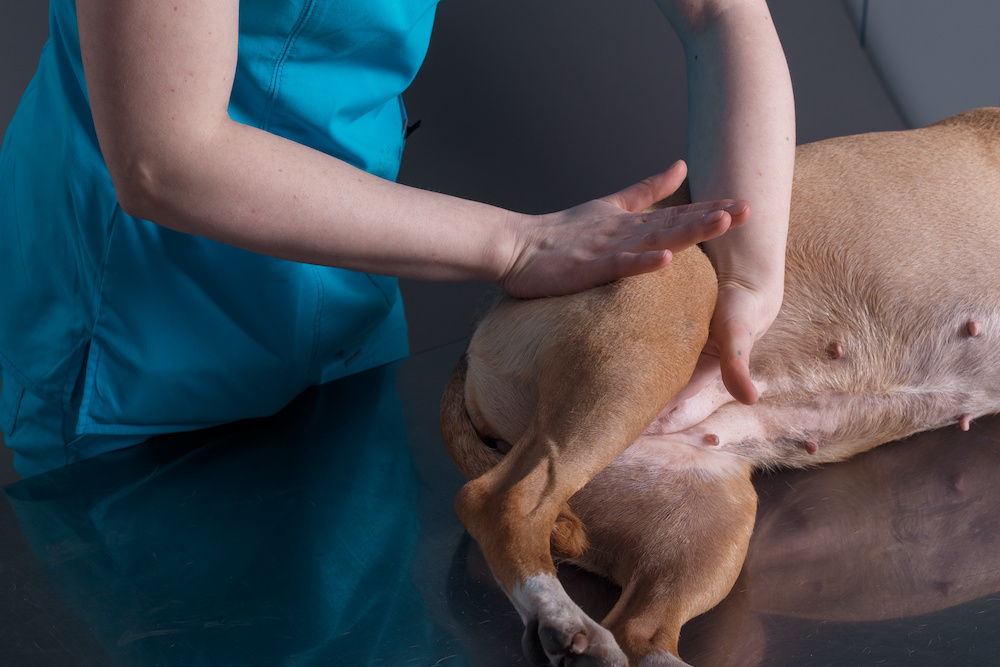How To Massage a Dog With Arthritis for Pain Relief

Seeing your dog go through pain because of their arthritis can be incredibly sad.
They cannot tell you exactly what they are feeling, and you cannot explain to them why they feel so uncomfortable.
There are many top joint supplements for dogs available on the market.
However, by learning how to massage a dog with arthritis, you can offer them some type of immediate relief.
You can quickly and easily learn how to do massages for your dog at home.
The addition of massages to their joint and arthritis care could be the difference that they need to feel better, so go ahead and give it a try today.
Will Massage Help My Dog’s Arthritis?
Have you ever heard of a dog massage for arthritis?
Arthritis is a degenerative condition that affects your dog’s joints.
Owners who see their dogs suffer through the pain and inflammation caused by arthritis are always looking for ways to relieve those symptoms.
Many have never considered giving their dog a massage, but this can actually help relieve that pain.
This is especially important if you live in a colder climate since cold weather often increases arthritis issues in dogs.
If your dog suffers from arthritis and weak joints, their other muscles have to overcompensate to stay strong and sturdy.
This can cause pain in more areas than just the arthritic joints, which means your dog is even more uncomfortable than they need to be.
Muscles become strained from working in strange ways, and your dog may not be able to relieve these muscles on their own.
A massage, however, can help relax those muscles. Additionally, the massage may also help improve blood flow.
Increased blood flow to arthritic and aching joints will reduce pain and inflammation.
So, overall, giving a massage is a significant next step for arthritic joint care.
What Is Dog Arthritis, Anyway?
Now, before you learn exactly how to give your dog a massage, it is crucial to first know what arthritis is.
Arthritis is a degenerative joint condition.
The condition causes the joint tissue and cartilage to break down, leaving the joint bones unprotected.
This can cause the bones to rub together or move in unnatural ways.
Unfortunately, that continuous rubbing then causes joint pain, inflammation, and muscle strain.
Giving your dog a massage can help alleviate those conditions.
How To Massage a Dog With Arthritis
Are you ready to learn how to massage a dog with arthritis?
Massaging a dog with arthritis is going to help them to feel more comfortable.
Even if this type of massage is not going to erase their arthritis, it will help them find some kind of relief.
As a dog owner, this is probably all that you want for them.
Take time to learn how to do this appropriately so that your dog can get comfortable and relax from their usual stress or pain.
Step 1: When To Massage
For the best results, it is a good idea to massage your dog both in the morning and at night.
In the morning, you can relieve any stiffness in your dogs joints that has built up overnight and get your dog ready to face the day.
At night, you can ensure that their muscles are relaxed before they head to sleep so that tomorrow will be a little bit easier.
If you can only do this once a day, try starting with massaging your dog at night.
Step 2: Set Up
Have your dog lie down next to you.
It is best if they lay on their side, with their legs sticking out away from you.
Get your dog comfortable and happy by petting them, stroking them, and generally running your hands all over their body.
Your goal here is to get them used to being touched so that you can begin the actual massage without scaring them.
Step 3: Look for Tight Muscles
As you stroke your dog’s body, pay attention to how their muscles are feeling.
This will be something you have to get more used to looking for over time, but your goal is to identify any muscles that seem tight.
When you find an area that seems to be tight, stroke this area with slightly more pressure.
This will gradually increase blood flow in that spot without hurting your dog.
Make sure you do not put pressure on joints that you know are arthritic.
The goal is not to massage the arthritic joints.
Instead, you’re trying to relax the rest of the muscles in your dog’s body.

Step 4: Knead Large Muscle Groups
Large muscle groups, like the shoulders and haunches, deserve some extra attention.
These areas are more likely than others to get tense, so you should take some time to massage and knead these areas.
Do not work in one area for too long, though.
Just keep moving your hands while ensuring your dog does not seem to show any signs of pain.
Step 5: Massage the Limbs
Once you’re done with the large muscle groups, run your hands along your dog’s limbs.
Do this gently, and do not move the arthritic joints too much.
You can take your dog’s limbs and gently move them around to stretch them.
This should all be kept within a comfortable range of motion for your dog.
Step 6: Switch and Repeat
Once you are finished, help your dog to roll over to their other side.
Repeat the process, making sure you reward your dog for their patience with love or a treat.
Step 7: Target Trouble Areas
If you notice your dog has obvious inflammation in some areas, you might be able to help relieve some of that.
Here’s how you can do that.
First, get a towel, wet it with cold water, and then wring it out so that it is only damp.
Then, wrap the towel gently around the swollen areas.
Sit with your dog for five to 10 minutes while the towel rests on the joints.
This cold compress should help your dog feel a bit more comfortable despite the inflammation.
How Do You Massage an Older Dog With Arthritis?
When working on a senior dog with severe arthritis for the first time, there are some additional considerations you should keep in mind.
If your dog has never had a massage before, they might be confused by the process.
Senior dogs might not have perfect sensory perceptions.
This can lead them to be aggressive or confused when approached or massaged due to blindness and other sensory issues.
For these reasons, make sure that you work very slowly and gently.
Do not proceed if your dog seems upset or anxious at the prospect of being massaged.
Instead, take the time to get your dog more used to being touched all over before you try to do an actual massage.
Dog Massage for Arthritis Pro Tip: Don’t Go Too Deep!
Finally, make sure you do not try to give your dog a deep tissue massage.
Overdoing your at-home massage or massaging too aggressively can cause dog pain that they do not need to experience.
In fact, you could increase the pain and inflammation if you overdo things.
Hence, keep sessions short. Only massage and stroke their muscles lightly.
It might not feel like a lot, but even a light massage can make a huge difference in how your dog feels.
If you think your dog will benefit from a deep tissue massage, contact a veterinary massage therapist to set an appointment.
How Can I Help My Dog With Arthritis Pain?
Are you looking for other ways to help your dog not feel as much pain from their arthritis?
If so, here are some ideas you can try to make arthritis pain a less common occurrence in your dog’s life.
#1. Change Their Bed
Get your dog a memory foam or similarly supportive bed.
This type of bed will help ensure your dog’s joints don’t feel too much pressure while they sleep or rest.
This means they will feel less pain when they get up.
#2. Install Ramps and Stairs
If your dog has trouble climbing to certain areas, consider adding ramps or stairs made for dogs with arthritis.
These things will help your dog move around safely without increasing the amount of pain experienced by their joints.
#3. Talk To the Vet
Make sure you get your dog’s vet involved in the treatment of their arthritis.
While there are some things you can do at home to help them feel better, severe cases will need additional, professional treatment.
Things like anti-inflammatory drugs and supplements may be helpful, too.
Your vet can guide you on those matters more extensively.
It’s Time To Massage!
Now that you know how to massage a dog with arthritis, it is time to try the technique out and see how your dog responds to it.
Your dog might take some time to get fully comfortable with the idea of the massage.
But once they are, you will easily see if the massage gives them any comfort or relief.
Most dogs, at the very least, seem to show fewer symptoms of arthritis pain after having a massage.
Observe your dog closely to see if they fit that pattern.
If they do, you may do this massage regularly to help them manage the pain they feel because of arthritis.




